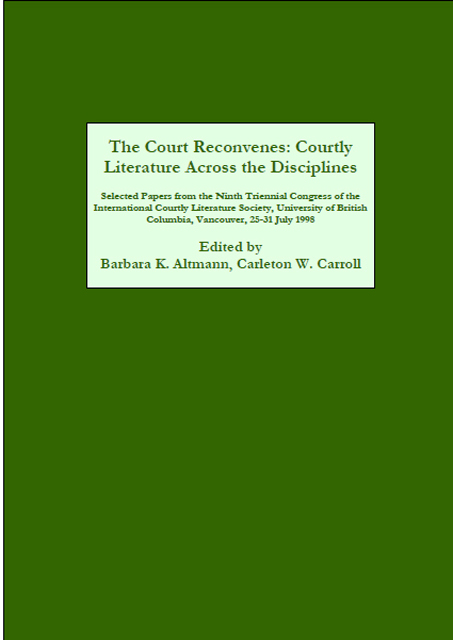 The Court Reconvenes
The Court Reconvenes Prefigurations of Courtliness in the Bayeux Tapestry
Published online by Cambridge University Press: 31 March 2023
Summary
The Bayeux Tapestry is a 230-foot embroidery, made probably in English workshops during the second half of the eleventh century. This giant picture show relates the dramatic story of the Battle of Hastings in October 1066, when Duke William of Normandy defeated usurper Harold Godwinson and his Anglo-Saxon troops.
For scholars, the Tapestry is also a unique social document of eleventh-century Anglo-Norman civilization, and it is that aspect of it that inspires these remarks. My specific aim is to look for signs of an emerging society, ready to make room for the cultural amenities that we associate with cortezia. Two issues in particular are relevant to my analysis: the rise of an elite leisured class, and a feminine perspective.
The Tapestry came into the public domain at the time of Napoleon. He, like his ambitious predecessor William, with whom he wanted to be compared, used it as a propaganda device to make a statement about just conquest. Subsequently, however, the critical establishment of Napolean's day wrongly imposed a univocal nineteenthcentury concept of interpretation on this eleventh-century embroidery. I would suggest that this limited conventional bias leaves out important, implicit messages, for as Pächt (1–2) and Brilliant (16) have argued, pictorial narrative permits multiple readings, sometimes even contradictory ones. When we add to this that the Bayeux Tapestry was put together by many hands, there are bound to be ambiguities in its meaning.
The very first episode immediately establishes the socially-confined courtly world that serves as the backdrop of the main story (Fig. 1). We see Harold Godwinson in consultation with Edward the Confessor, king of England, who also happens to be his brother-in-law. It is important to remember that, while this has been seen as a tale of dynastic rivalries, it is really a family romance in which the principal players are socially interconnected. They are all members of an elitist group whose wealth and standing are demonstrated in an extravagant display of architectural detail and sumptuous regal attire.
It is generally assumed that in this opening scene Harold is being sent off on a mission to King Edward's cousin, William Duke of Normandy. Before setting sail, however, Harold enters his private chapel at Bosham for a moment of meditation, and then joins his comrades for a feast in an upper room of his seaside manor (Figs. 2–3).
- Type
- Chapter
- Information
- The Court ReconvenesCourtly Literature across the Disciplines: Selected Papers from the Ninth Triennial Congress of the International Courtly Literature Society, University of British Columbia, Vancouver, 25-31 July 1998, pp. 241 - 254Publisher: Boydell & BrewerPrint publication year: 2002
